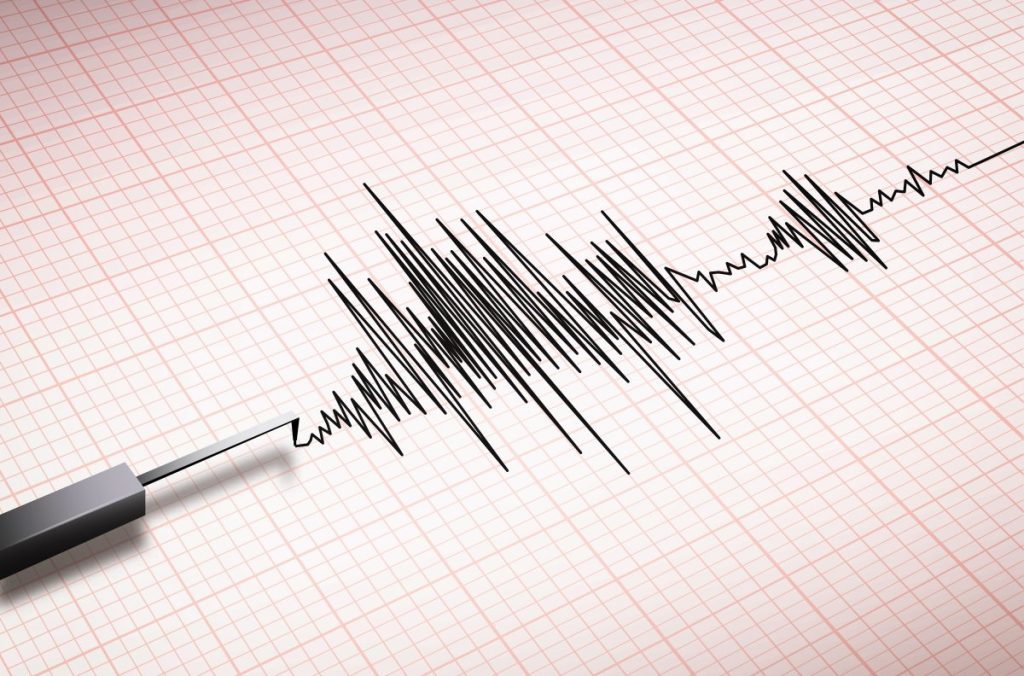The 4.8-magnitude earthquake near Lebanon, New Jersey, on Friday morning had eastern Pennsylvania rocking and rolling.
USGS research Paul Earle told reporters during a news conference Friday afternoon that there have been similar earthquakes in that area over the past 100 years or so. He described the latest as normal.
It’s the strongest earthquake to be felt in our region since Aug. 23, 2011, when a magnitude 5.8 tremor in Virginia was felt from Canada to Georgia and even left cracks in the Washington monument. That earthquake was the strongest on the East Coast since World War II.
But there have been a number of smaller quakes before and after that one, most of which go unnoticed.
“There is a seismic zone in Pennsylvania, the Reading-Lancaster seismic zone,” according to Anne Meltzer, a professor of seismology at Lehigh University. “It tends to have more magnitude 3 [quakes]. People in the Lehigh Valley sometimes feel those.”
The earliest records of earthquakes in Pennsylvania date back to colonial times. USGS records show Pennsylvanians may have felt an earthquake along the St. Lawrence River in 1663, another at Newbury, Mass., in 1727, and another in New York City on Dec. 18, 1737.
Two severe earthquakes struck Philadelphia in 1800, one March 17 and one November 29. And earthquakes on Nov. 11 and 14, 1840, were reported to have created unusually large swells on the Delaware River.
There were reports of an earthquake shaking dishes off tables in Allentown on May 31, 1884, and a few chimneys in Allentown were toppled during an earthquake on May 31, 1908.
Plaster walls, dishes, bottles and furniture were tossed around in an earthquake in Sinking Spring, just outside Reading on Jan. 7, 1954.
A moderate earthquake was centered in the Lehigh Valley Sept. 14, 1961. The only reported damage involved bricks from a chimney in Allentown, but according to reports, police and newspaper switchboards were swamped with calls from Bethlehem, Catasauqua, Hellertown and Weaverville.
In western Pennsylvania, a 5.2 magnitude quake rocked the Greenville-Jamestown area and was felt throughout the state, as well as in parts of Ohio, Indiana, Ontario, Michigan, New Jersey and West Virginia, according to the U.S. Geological Survey.
Other minor tremors have struck Philadelphia in 1961, Cornwall in 1964, a New Jersey earthquake could be felt in Darby in 1968 and in 1972 slight damage was reported in New Holland. In 2015, a magnitude 2.5 earthquake struck Bernardsville in central New Jersey.
Earthquakes on the East Coast are felt more and over a larger area than ones on the West Coast. Earle said the rock on the East Coast is harder and seismic waves travel further.
“You’re going to have a lot more people feeling this earthquake than you would with a similar sized earthquake in California,” he said.
Meltzer said the impact of quakes differs based on their depth. The energy from a deep earthquake is weakened as it passes through layers of rock and sediment, whereas shallow quakes retain their energy. That’s why they tend to be more destructive.
Usual for earthquakes in this area, the one on Friday was quite shallow, about 4.7 kilometers deep, but its relatively low strength prevented it from causing much damage.
The USGS has a “Tell Us” feature on its website asking users to explain the strength of earthquakes in their area. Those explanations can vary widely, Meltzer said.
“Sometimes there are site conditions that can amplify the motions,” she said.
“It can actually be quite different locally depending on whether you’re close to bedrock, which is really firm, or sedimentary rock, which is less so.”
Larry Malinconio, associate professor of geology at Lafayette College, said he was in his home in Easton’s College Hill section when he felt the quake.
“This was pretty substantial in the sense you could feel the side-to-side motion,” Malinconico said.
Malinconico said about 1 million earthquakes occur worldwide per year with most going undetected by residents.
“We don’t live in California, so we don’t have frequent earthquakes,” he said, “but there are old fracture systems in the northeastern part of North America, and occasionally they slip.”









